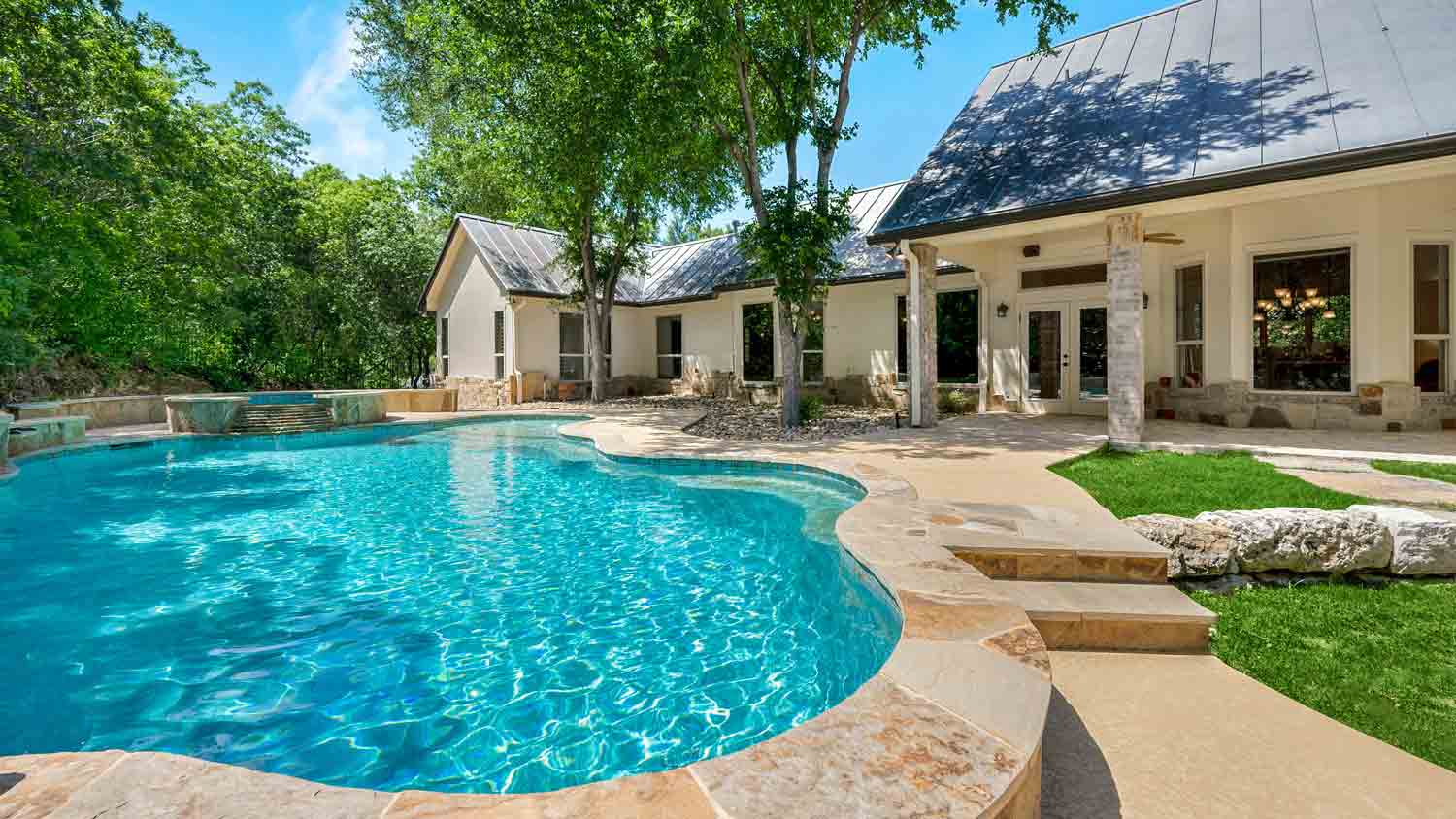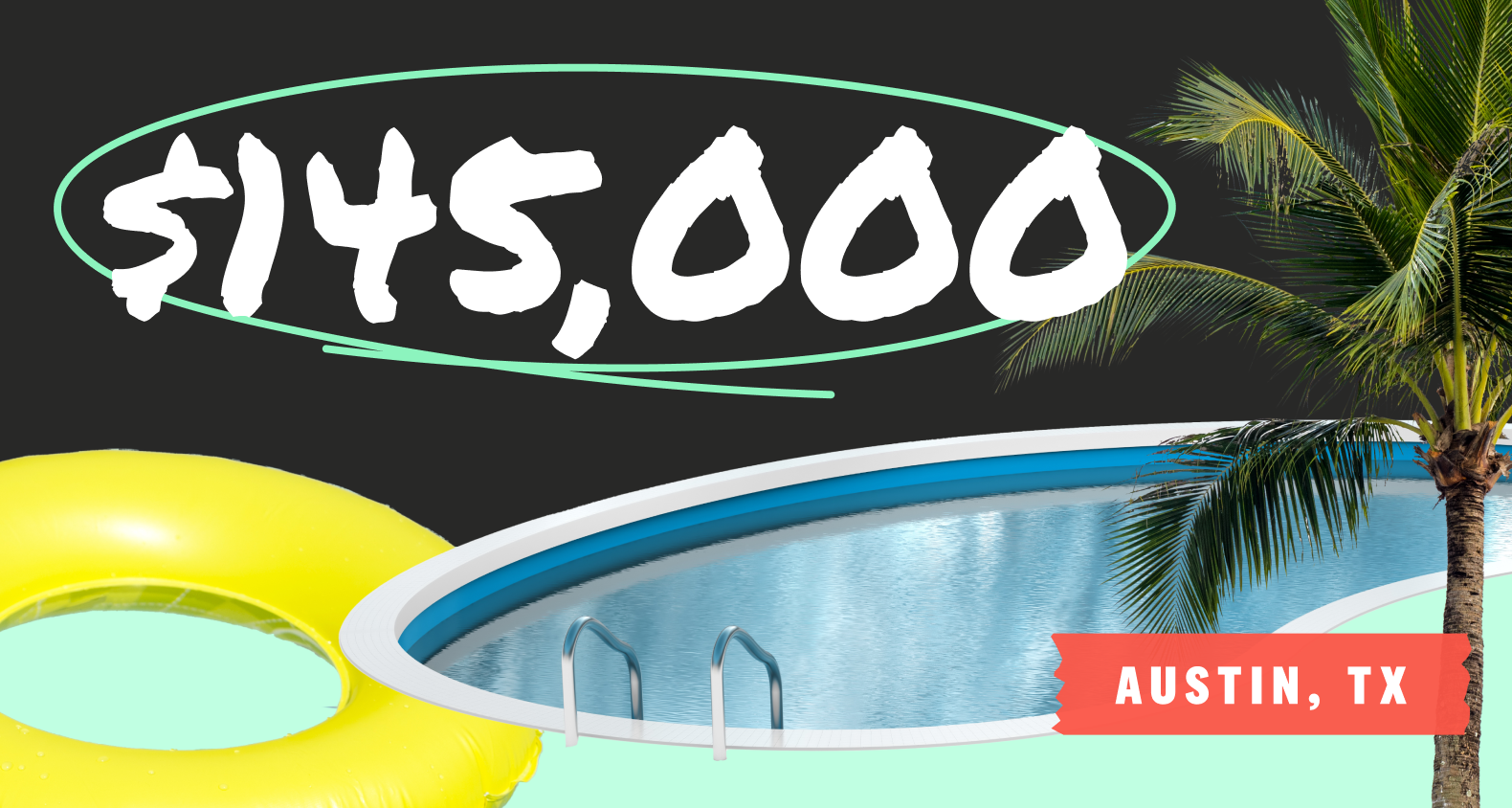How to Clean a Pool Filter in 6 Steps
Rinse and repeat, then swim


- Garden hose
- Spray nozzle or cartridge cleaning tool
- Plastic trash can or large bucket (optional)
- Measuring cup
- Cartridge filter cleaner
- Trisodium phosphate (TSP) powder
- Muriatic acid (optional)
- Protective goggles
Jumping into a sparkling clean pool on a hot summer’s day is one of life’s little pleasures. To make this moment a reality your pool filter is always working behind the scenes to pull debris, bacteria, bugs, dirt, and hair out of the water. Because it takes care of your water, you need to take care of it. Use this guide to learn how to clean a pool filter in six steps, so you can make a splash in no time.
Turn Off the Power and Open Valves
Before removing the pool filter, turn off the power and open the bleeder valves to release air pressure from the filter. This allows the top of the filter tank to come off more easily.
Drain the Filter Tank
Drain the filter tank by removing the plug and allowing the water to drain away from the filter tank. You can also use a bucket to catch the water as it drains out of the tank and dump it elsewhere if necessary. If the filter tank is dirty, you can take this opportunity to rinse it out and allow the dirty water to drain out.
Remove the Cartridge
 Photo: pixinoo/ istock/ Getty Images
Photo: pixinoo/ istock/ Getty ImagesThe first step to cleaning a cartridge filter is to remove it from the filter housing by removing the top and then pulling out the filter. If you aren’t sure how to do it, you can follow the manufacturer’s instructions for your particular filter.
Apply Filter Cleaner
Once you remove the cartridge, grab your preferred cartridge cleaner and either spray the solution on the filter or mix a filter cleaner solution in a budget and submerge the filter. Let it sit for the recommended length of time, between 15 and 20 minutes. You can also use a mixture of trisodium phosphate (TSP) mixed with water as your filter cleaning solution. TSP is a heavy duty cleaner that is good at removing grease, dirt, and grime and is available at most home improvement or hardware stores as well as online. Make sure to wear heavy-duty protective gloves and goggles before working with TSP.
Soak in Muriatic Acid if Necessary
If your filter is excessively dirty or still coated in calcium carbonate, algae, iron, or other minerals after the initial cleaning, you can soak it in a mixture of one part muriatic acid to 20 parts water. Muriatic acid is a corrosive liquid that contains hydrogen chloride dissolved in water to form a diluted version of hydrochloric acid. Be sure to wear your heavy-duty protective gear while handling it.
To avoid damaging the filter, fully rinse the filter to remove all oils and cleaning solution before soaking it in muriatic acid. Leave the cartridge filter in the solution until all of the bubbling stops, and then rinse it again.
Reinstall the Filter
 Photo: pixinoo/ istock/ Getty Images
Photo: pixinoo/ istock/ Getty ImagesAfter you’ve finished the final step—either the rinsing off the cleaning solution or the muriatic acid—it’s time to reinstall the filter in the housing. Follow the manufacturer’s steps to reinstall the filtering into the housing and then turn everything back on to make sure it’s working properly. Note the pressure on the pressure gauge after reinstalling the filter so you know when it’s time to clean it again.
When to Clean Your Pool Filter
You should replace your pool filter every few months to make sure it can keep up with removing dirt, grime, bacteria, and oils from your pool. Another way to tell when it’s time to clean the filter is to note the pressure on the pressure gauge when you install a new filter. Check the pressure gauge periodically or as part of your weekly pool maintenance, and when the pressure is 8 to 10 pounds per square inch (PSI) higher than the normal level—typically between 10 and 20 PSI—it means it’s time to clean the cartridge. If the water is dirty or cloudy, another sign that your pool has a problem and you may need to clean the pool filter.
DIY Pool Filter Cleaning vs. Hiring a Pro
Cleaning a cartridge filter is one of the easier pool maintenance tasks and one you can likely do yourself. Even though it’s an easy process, it can take a few hours to complete, so you can also hire a local pool service professional. They may offer regular pool maintenance services that you can sign up for and won’t have to worry about doing the pool maintenance yourself.
Frequently Asked Questions
There are three types of pool filters—cartridge, sand, and D.E. (diatomaceous earth). Cartridge and sand filters are the most popular types and are affordable and easy to maintain. D.E. filters are more expensive and require more maintenance, but they are also very good at filtering out small particles.
No, pressure washing isn’t recommended for cartridge filters. The high pressure can damage the filter paper, and the gentler pressure from a regular garden hose will work to rinse the cartridge filter. If the cartridge is very dirty or has algae or mineral buildup, you can use a muriatic acid solution to soak the filter and remove the buildup.
A new pool filter costs between $250 and $2,000, so keeping up with maintenance is important to prolong the filter's life and avoid extra costs. Cleaning a cartridge filter only costs between $20 and $40 for the supplies, and it will take a few hours of your time, but it can end up saving you big money.





- Swimming Pool Installation
- Pool Liner Replace & Install Companies
- Above Ground Pool Contractors
- Pool Remodeling Companies
- Inground Pool Companies
- Pool Removal Companies
- Inground Pool Repair Companies
- Sauna Companies
- Hot Tub Companies
- Sauna Repair
- Fiberglass Pools
- Pool Designers
- Pool Pump Repair
- Pool Closing Services
- Solar Pool Heater Installers















